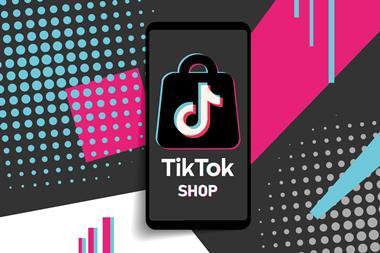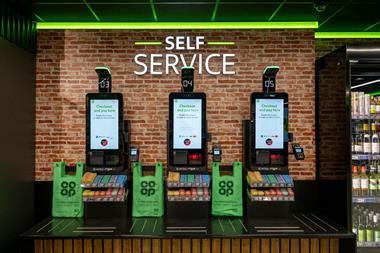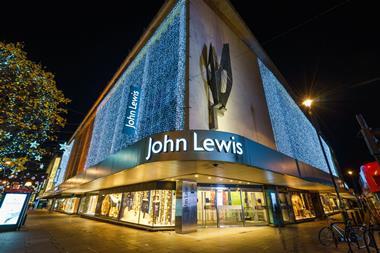Just like their UK counterparts, the US’s top retailers have had a long-running love affair with software development.
But 2007 marked a watershed year for US retailers. According to the National Retail Federation’s (NRF) latest IT budget report, packaged applications have overtaken in-house developed software in the past year, with a 60:40 split.
What’s more, the trend seems to be to implement whole suites of packaged applications from one vendor where possible, allowing retailers to build long-term partnerships with a select few and get the most out of them.
Part of the reason for this change is down to service. Both UK and US retailers are trying to make themselves more customer-focused. This means that schedules for software implementations are being squeezed more than before, as companies attempt to respond to both customer demands and innovation from rivals.
The NRF’s Association for Retail Technology Standards (ARTS) has made considerable progress in the past few months in creating best practice to help retailers turn their underlying IT infrastructure into a platform that they can quickly build software blocks onto – whether they are packaged or home grown.
The first of its initiatives soon to come to fruition is the SOA Blueprint for Retail. Service-oriented architecture (SOA), allows retailers to deploy new software modules quickly that provide individual business services and reuse them in different places, while hiding the implementation complexity that dogs so many projects at present.
The blueprint is an independent depiction of the best practice for creating such IT architecture and includes examples of how the building blocks of software can be tied together to support retailers’ business processes.
Big Lots executive Greg Wilmer, who chaired the ARTS work team that devised the blueprint, explained at NRF: “SOA is process-oriented and message-oriented. If I have a business service, I must ask it to do something and provide context to the request before it will give information back. ARTS has designed the context and messaging information to and from the service.”
This approach is being championed as the future of IT for retailers in particular, because these companies re-use the same business processes in several places. For example, think of the retailers that offer an online stock-checking service for customers, that also have the same process running through their EPoS systems for staff. SOA allows them to create a stock-checking service once and re-use the same code in several places. And, as retailers are pushed to better integrate their multiple channels and provide a seamless experience across them, this strategy is expected to become popular.
Gaining customer insight
One retailer that has done work in this area is Harrods. The company’s IT director, David Llamas, spoke at NRF, explaining how the department store has used an SAP-based service-oriented architecture to create a customer database that covers its multiple sales channels. After analysing this information, Harrods found that 55 per cent of its sales come from the 5.7 per cent of its customer base that it categorises as the “jet-set elite”.
Insights such as this have allowed it to develop a tiered loyalty scheme that offers different types of customers varying services and constantly aims to increase customers’ spend by motivating them to reach the next level of the loyalty scheme. Since its launch in September 2006, Llamas estimates that the scheme has generated about£10 million in additional sales.
Home Depot is in the process of rolling out an SAP-based IT platform across its entire business. Director of SAP technology Matt Stultz – the project is important enough for it to have a director with SAP in his job title – says that the new system will be used to enhance its business processes and productivity.
In one example, where customer as well as employee productivity is being improved, Home Depot has used SAP NetWeaver to build a web-based front end to an application it created to help customers find stock at multiple stores.
The idea for the application came when Stultz had to visit several Home Depot stores to buy enough flooring tiles on special offer to complete a DIY project. The application prints directions to each store and gives details of how much stock each is holding. It also provides contact details for the relevant department supervisor in each store so that customers can ring ahead and make sure the stock is reserved for them. This information, which might have taken a customer half an hour or more to gather themselves, is now available in moments.
This application is an example of how several business services can be combined to create useful business tools. Stultz says Home Depot’s deployment of SAP will help it create an SOA and build on services such as these over and over again.
ARTS’s other development is its Retail Transaction Interface (RTI) standard. The association wants to put an end to point-to-point integration for store applications that link to EPoS systems – such as those running on kiosks, handhelds or self-checkouts. Because EPoS systems are the hub of the store IT architecture, ARTS believes software vendors should develop them with standard interfaces and has provided a standard for companies to work to. Applications that need to plug into an EPoS system can then make use of standard interfaces.
The result should be that retailers can “plug and play” new store technology. In theory, if all software developers stick to the RTI standard, deploying new store technology could become as simple as setting up an iPod on your home computer.
Although the impact of these new standards will not be felt fully for several years, retailers are using software to support their customer service strategies.
US grocery group Food Lion is one example. Operating 1,300 stores through four brands, the company had previously employed a one-size-fits-all policy for aspects of its business such as price and assortment.
Following a data project to analyse and segment its customer base, it has been able to group its stores into clusters based on their mix of customer segments. While its supply chain has remained standardised, aspects of its business that influence customers – such as marketing, pricing, service, merchandising and category management – are all set on a store-by-store basis.
Clever computing
Food Lion has employed both pricing and promotion optimisation software, as well as assortment and space-planning software, to allow it to automate the decision-making process on what is suitable for each of its stores. The result is that it is regaining ground lost to more specialist competitors – such as Whole Foods – because customers are now able to get all their food shopping in its store.
At Sears, software has been used to deliver new customer services cost-effectively and build on its initial multichannel services. Vice-president for IT, planning, reporting and innovation Jeff Roesch explained how, for instance, Sears has taken the concept of allowing customers to buy online and pick up in store one step further: if customers let Sears know when they will be coming to the store, the retailer will allow a kerbside pick-up. Its systems tell stock room staff when the order needs to be fulfilled and they will bring the goods out to the customer’s car so they don’t need to enter the shop.
Maybe this is a service that only consumers in the US would require, but it demonstrates that systems, rather than just staff, are becoming essential for the launch of customer services.
In an update to a development announced at last year’s show, Circuit City chief executive Philip Schoonover gave an example of how the retailer is reusing the same applications and content across multiple business channels.
At NRF last year, it showcased a tablet PC application that allows its store staff to guide customers through the sales process for technical products in its stores. Now it has introduced the same application to all of its channels, so the content is available to store staff, its Firedog installation staff and customer service agents in its call centres. Schoonover said: “What used to be content on the web is now leveraged across all channels.”
AutoZone’s recently retired chief information officer Ken Brame talked of the need to create strategic software partnerships to get the most value from packaged software. The straight-talking Texan has just finished an implementation of SAS’s planning and forecasting system. As an early adopter of the system, Brame came up against glitches, but said that by developing a close partnership with the vendor, AutoZone was able to get things ironed out to its satisfaction. In fact, SAS took its research and development staff who were working on a new release off the job and put them to work on fixing the problems with the existing release.
Schoonover agrees that packaged suites of software are allowing him to implement new systems more easily. “Oracle is doing a great job of assembling a suite of tools. In that case, consolidation has been good and we have been able to roll out its merchandising system in a very logical way,” he said.
However, Michaels Stores chief information officer Michael Jones warned that packaged software will only remain competitive as long as software vendors don’t get greedy with maintenance contracts. He said: “Because maintenance costs are rising, the pendulum could start to go the other way. It is getting easier to develop something quickly yourself, because there are so many development frameworks out there.”
Whether retailers choose to buy or build applications, the message from this year’s NRF conference is that software and customer service now go hand in hand.


























No comments yet